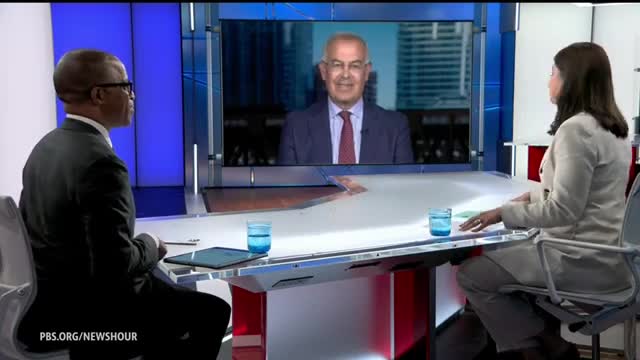Tornado chasers push boundaries of storm forecasting technology

This article was created by AI summarizing key points discussed. AI makes mistakes, so for full details and context, please refer to the video of the full meeting. Please report any errors so we can fix them. Report an error »

Millions of moviegoers are expected to flock to theaters this weekend for the release of \"Twisters,\" a sequel to the 1996 blockbuster. The film, described as a summer escapist thriller, explores themes that extend beyond the scientific boundaries of tornado prediction. In conjunction with the film's release, journalist Miles O'Brien has produced a report highlighting the latest advancements in tornado research, featuring insights from meteorologists and storm chasers during this historically active tornado season.
Oklahoma has experienced approximately 100 tornadoes this year alone, resulting in significant destruction and loss of life. Current forecasting capabilities allow for about 15 minutes of warning before a tornado strikes. However, advancements in cloud-based computing and machine learning are paving the way for improved forecasting methods. Meteorologist Pam Heintzelman from the National Oceanic and Atmospheric Administration's National Severe Storms Laboratory is leading efforts to enhance warning systems through a project known as \"warn on forecast.\" This initiative aims to extend the lead time for tornado warnings to potentially one hour by utilizing an ensemble of weather models that account for uncertainties in data.
The report also features storm chasers like Jordan Hall, who actively pursue tornadoes to capture footage for news networks. Hall emphasizes that while chasing storms carries inherent risks, the primary danger lies in the extensive driving required to track these weather events. The integration of advanced technologies, such as mobile Doppler radars and lidar systems, has significantly improved scientists' understanding of tornado dynamics. These tools allow researchers to create detailed three-dimensional images of storms and gather critical data on wind speeds.
Despite these technological advancements, questions remain about the chaotic nature of wind speeds at the surface level during tornado events. Meteorologist Eric Rasmussen suggests that future innovations, including the potential use of Doppler drones, may be necessary to further unravel the complexities of tornado behavior.
As the tornado season continues, the intersection of entertainment and scientific inquiry highlights the ongoing efforts to improve public safety through enhanced weather forecasting and research.
Oklahoma has experienced approximately 100 tornadoes this year alone, resulting in significant destruction and loss of life. Current forecasting capabilities allow for about 15 minutes of warning before a tornado strikes. However, advancements in cloud-based computing and machine learning are paving the way for improved forecasting methods. Meteorologist Pam Heintzelman from the National Oceanic and Atmospheric Administration's National Severe Storms Laboratory is leading efforts to enhance warning systems through a project known as \"warn on forecast.\" This initiative aims to extend the lead time for tornado warnings to potentially one hour by utilizing an ensemble of weather models that account for uncertainties in data.
The report also features storm chasers like Jordan Hall, who actively pursue tornadoes to capture footage for news networks. Hall emphasizes that while chasing storms carries inherent risks, the primary danger lies in the extensive driving required to track these weather events. The integration of advanced technologies, such as mobile Doppler radars and lidar systems, has significantly improved scientists' understanding of tornado dynamics. These tools allow researchers to create detailed three-dimensional images of storms and gather critical data on wind speeds.
Despite these technological advancements, questions remain about the chaotic nature of wind speeds at the surface level during tornado events. Meteorologist Eric Rasmussen suggests that future innovations, including the potential use of Doppler drones, may be necessary to further unravel the complexities of tornado behavior.
As the tornado season continues, the intersection of entertainment and scientific inquiry highlights the ongoing efforts to improve public safety through enhanced weather forecasting and research.
View full meeting
This article is based on a recent meeting—watch the full video and explore the complete transcript for deeper insights into the discussion.
View full meeting